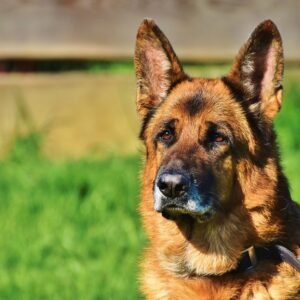Unlocking the natural abilities of your canine companion can be a rewarding venture for both you and your pet. Among these abilities is tracking, an instinctive skill that many dogs have in their toolbox. In particular, tracking deer can form an integral part of hunting or wildlife excursions. Here, we delve into the step-by-step process of training your dog to track these majestic creatures.
Understanding Your Dog’s Instincts
Firstly, it’s essential to know that every dog is unique, with their breed generally dictating their tracking capabilities. For example, breeds such as Coonhounds and Bloodhounds are exceptional trackers. However, with training, most dogs can improve their tracking skills and potentially track deer effectually. The key lies in stimulating and nurturing their instinct to sniff and follow a trail.
The Relevance of a Dog’s Breed
Different dog breeds have different strengths when it comes to tracking. While hounds have a heightened sense of smell, retrievers like the Labrador are famed for their pace and agility. Knowing your dog’s breed and its associated strengths will guide your training approach.
Training Your Dog to Track Deer: Step-by-Step
Step 1: Basic Obedience Training
Before introducing any tracking training, ensure your dog has gone through basic obedience training. Essential commands such as “sit,” “stay,” and “come” are critical to control your dog while tracking.
Step 2: Introducing the Scent
The next step involves familiarizing your dog with the scent of a deer. You can use deer hides or antlers for this process. Let your dog explore and sniff, fostering a positive association with the scent by rewarding them with treats or praise.
Step 3: Creating a Trail
One of the best ways to train your dog is to create mock trails using a deer’s scent. Drag the scent along a path and let your dog find the object at the end of it, rewarding them when they successfully track it down.
Step 4: Increasing Complexity
Gradually make the tracking drill more complicated by extending the length of the trail or introducing multiple paths. It’s also beneficial to conduct drills in various environments, mirroring real-world scenarios where weather and terrain might vary.
Step 5: Real World Application
After conduction numerous simulations, it’s time to put your canine’s skills to the test in the real world. Always maintain control and ensure your dog is safe during this process.
Important Points to Consider
Patience is Key
Tracking is a complex skill that requires time and patience to master. Celebrate your dog’s small victories and progress, encouraging them throughout the journey.
Consistent Training
Consistency is critical in training dogs. Regular, short training sessions are more effective than sporadic, extended durations. The goal is to keep your dog enthusiastic and motivated, avoiding burnout.
Professional Guidance
Acquiring professional help, especially for beginners, can be highly beneficial. A professional can provide more structured guidelines and help troubleshoot any problems you may encounter.
Summary
Training your dog to track deer can be an exciting adventure that stimulates your dog’s natural instincts and strengthens your bond. By understanding your dog’s inherent capabilities and patiently working through each training stage, you are on your way to unlock your canine’s remarkable tracking abilities.

